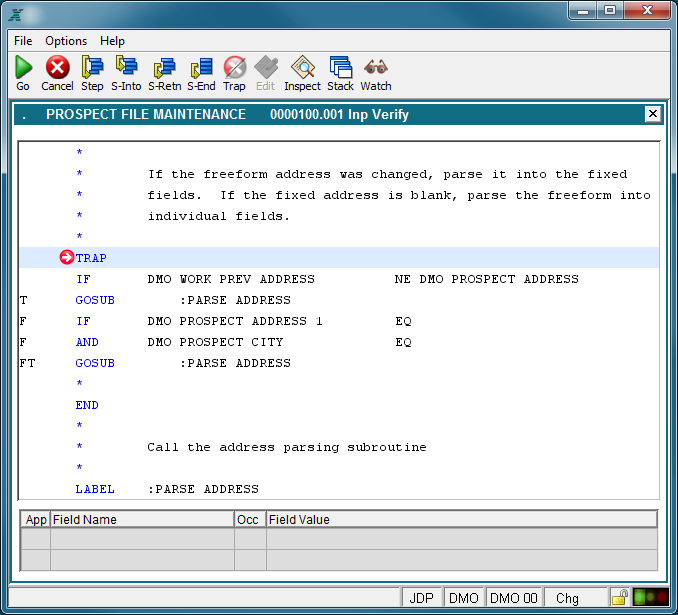Chapter 4-5: The Appx ILF Debugger |
Key Information The key information line (or title line) under the APPX toolbar. The figure below contains the following items, from left to right: Positions 1 through 5 display the current values of the internal true/false status indicators. As you execute statements during the debugging procedure, the system dynamically updates these values as they are set and reset to help you evaluate whether statement logic is correct. Note that the line is left justified so if no true/false indicators are currently set, the next field (process name) appears first. The process name, such as "PROSPECT FILE MAINTENANCE". The frame number, image number, and child sequence number, such as "0000100.001". The process type abbreviated, such as 'Inp' for input. The event point, such as Verify.
An Initial Debugger Screen With Key Information |
Application Design Manual "Powered by Appx Software"935 ©2006 By APPX Software, Inc. All Rights Reserved |
